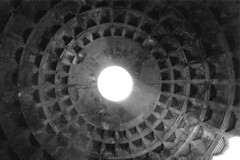 I brought this up in a comment below from my Corbusier post and wanted to give the visual. The picture you have just seen is a proposed house designed by Rotterdam based MVRDV for Brad Pitt's Make it Right Foundation. I want to unequivocally state that I have a lot of respect for any organization trying to improve the lives of the inhabitants of New Orleans before I completely trash this particular effort (if you can call it an effort).
I brought this up in a comment below from my Corbusier post and wanted to give the visual. The picture you have just seen is a proposed house designed by Rotterdam based MVRDV for Brad Pitt's Make it Right Foundation. I want to unequivocally state that I have a lot of respect for any organization trying to improve the lives of the inhabitants of New Orleans before I completely trash this particular effort (if you can call it an effort).That being said, I'm at a loss for why this would ever be considered as an option for a fabric type of architectural building. What I mean is that there would be multiple iterations of this project, possibly on the same street. What could certainly pass as the folly of a single eccentric has no place as a valid or informed response to the society, culture, and environment of New Orleans. And yet there are still people out there who are absolutely bumfuzzled by the idea that people don't immediately fall in love with the pure genius of the deconstructivist dystopianism of the thing.
As a postscript I will say that the houses actually under construction aren't nearly this bad, though I'm still less than enthused with the effort to dialogue with traditional New Orleans history and forms. More to come...

2 comments:
I disagree with your comment. Sometimes architecture needs to make a statement and this house is a protest against the fact that the area is still not secured by the government and that the levee's indeed are so weak that the chance for a new flood within a decade is fair. Now instead of inserting architecture which covers this aspect (building friendly southern homes on stilts) this design actually adresses the issue of this uncertainty. The people in the Lower 9th Ward have the free choice and no-one has to choose this particular design. But funny enough it was chosen and will be built. So this house can be seen as a form of local protest and actually as a statement that the people stay and won't be forgotten.
It seems that the foundation allows the homeowners to select from the design options commissioned by the foundation. I don't know if anyone has selected this particular design but I am certainly placated by the ability of the eventual owners to choose that option only if they desire it.
The larger issue for me is that MVRDV even pondered this as a responsible way to attempt to design for the people of New Orleans. Did they start from the premise of providing a pleasing home or did they start from the premise of designing an effective "protest" piece? If the defense of the project takes the form of: "Well, it's really trying to be emblematic of the uncertainty that still plagues the region" then I'm still a little put off by the whole thing. I think any defense of a prototype home designed for New Orleans should begin with how to provide comfort in the particular environment in dialogue with the history of the place and how those issues have been dealt with effectively in the past as well as the present.
I would be interested in learning more about how this would function as a protest piece anyway. While I can understand the sentiment, I'm not sure how this design accomplishes it.
Practically, it appears that the entrance is not displaced high enough to avoid the type of flood waters encountered in Katrina. Having a sloped ceiling over a proposed parking space also raises the specter of accidently plowing a tall vehicle into the structure. The front balcony as shown is negating much of the benefit from its overhang by sloping up towards the sun. In short, I see no evidence that this design is addressing the most basic of architectural issues. Given that I can't find a lot of redeemable practical value in the most preliminary analysis of that rendering then I fear that the designer had form and protest in mind before even beginning to deal with comfort, environment, or place.
Maybe I'm just too nitpicky, but I don't like relief architecture as social commentary, especially when dealing with basic shelter for people.
Post a Comment